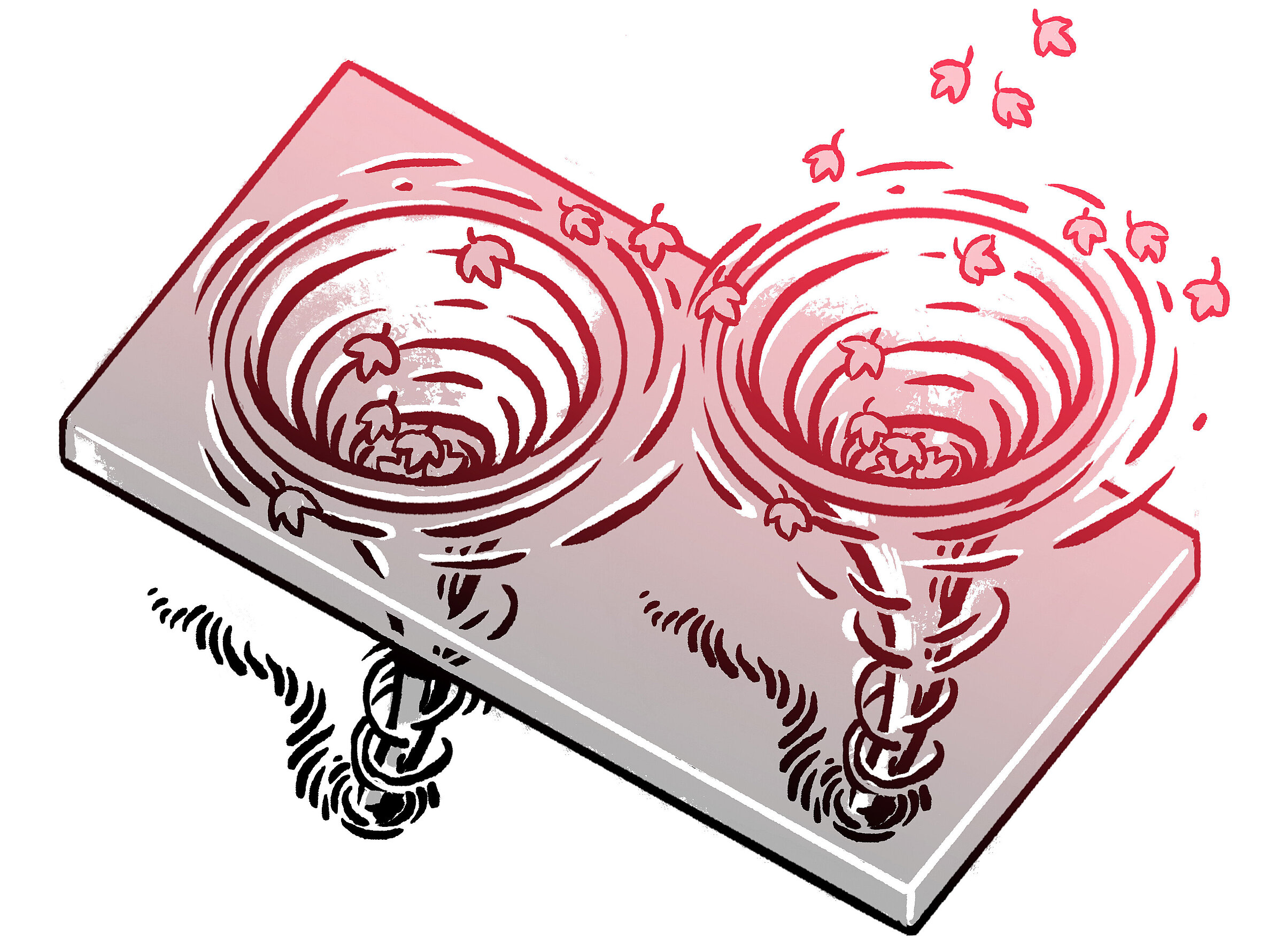If I look at a river with leaves swirling around in it, I notice a kind of geometry. The leaves in the water may initially lie in a circle on the surface, which may then be stretched into an ellipse and distorted further into a swirl. Models of dynamical systems recognize that in terms of the underlying geometry of the dynamics - in this case the approximate shape of the collection of leaves - it is more important to understand the whole system than the precise movement of individual trajectories.
The dynamical systems I study are models of processes that evolve in time. For example, ocean eddies and weather systems are essentially created by physical forces which power the motion of the ocean and the atmosphere. Deep ocean currents are driven by water which moves from an area of high density to an area of low density. And wind is basically parcels of air which are moved from areas of low pressure to areas of high pressure.
Over the last fifteen years, I have been trying to analyse phenomena in which the governing rules of motion change over time, as happens in many real-world systems. I usually start out with the pure math and, once I have a nice theoretical foundation, I move onto the algorithms and computing of the objects that I am interested in. I turn to oceanographers or climate scientists to get empirical data or complex models of real-world problems.
At the Freie Universität Berlin and in partnership with the Potsdam Institute for Climate Impact Research (PIK), we are looking at how we can learn from the geometry of motion in ocean and atmosphere models. Ocean eddies are one example of geometric structure in the ocean. They are like hurricanes in the water. Some of them are hundreds of kilometers across, but they rotate much more slowly. These eddies represent more than half of the ocean's kinetic energy, and transport heat, salt, and carbon. The water inside them is separated from the surrounding water and, depending on which way they spin, they can pull up nutrients from the sea floor or push them down and become biological deserts.
So far, nobody really understands the kinetics of eddies. We are trying to grasp how they appear, form, move around, and then break up and disappear after a number of months or years. Our aim is to develop techniques to observe and explain their lifecycle.
Classic dynamical systems would consider individual particles of water, but for complicated systems it makes more sense to look at very large collections of particles. This enables us to describe the dynamics linearly and learn about the whole system all at once. If we can really understand how these vortices form and break up, it would be a breakthrough for physics and fluid dynamics. We could then more accurately assess how much kinetic energy is tied up in these eddies and how much heat or carbon they transport through the ocean.
A second part of my research in Berlin and Potsdam focuses on social dynamics. We want to observe how groups which hold different opinions form and spread on social media, and how consensuses might be reached. We will use existing models based on certain rules for a discrete number of human agents and tease out macroscopic conclusions from the interactions between them.
I think many of society's problems today are social issues and can be summed up with the question: How do we get humans to play nicely together? Social media has a huge influence and not always a positive one. If we can better understand how opinion groupings evolve, we could mitigate deliberate destructive forces.
I try to contribute to society through mathematics wherever I can. For example, I have worked on the optimization of lung cancer radiotherapy, decreasing the radiation dose while making the imaging more accurate. I firmly believe that mathematicians should try to do something each year that helps society.


